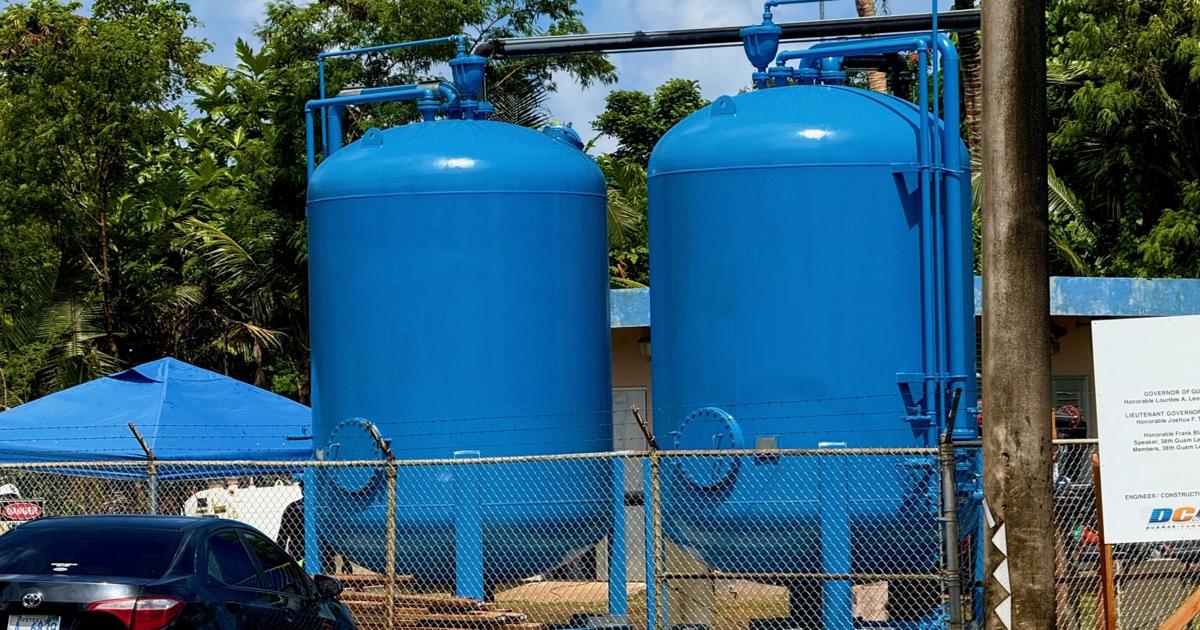Copyright guampdn

The Guam Environmental Protection Agency is seeking funding to investigate the source of dieldrin that the Guam Waterworks Authority says is present in some form in more than two-thirds of the island’s water wells. But Guam EPA officials didn’t give senators an estimate of how much they would be needing to do the investigation. Representatives from both Guam EPA and GWA on Friday shared more details about how widespread cancer-causing dieldrin is in Guam’s water, and the next steps to deal with the pesticide and find its source. Only two water wells, active Yigo well Y-15 and offline Dededo well D-17 have dieldrin levels above the limit where Guam EPA considers increased cancer risk “unacceptable.” Both are slated for treatment by the summer of 2026, along with offline Mangilao well M-4, which also showed dieldrin levels above the “unacceptable” 0.2 parts per billion cutoff as recently as 2023. But GWA operates 120 wells islandwide, and more than two-thirds show some amount of dieldrin, GWA assistant general manager for engineering Brett Railey told senators on Friday. “So islandwide, you can say that dieldrin is widespread. But at a low level,” Railey said. Of the 120 wells, 83 or 84 wells have dieldrin levels less than 50% of the 0.2 ppb “interim action level” where Guam EPA considers increased cancer risk “unacceptable.” Railey said another nine, including the three wells slated for treatment next year, have dieldrin at greater than 50% of the interim action level, or 0.1 ppb. Here are the other wells above 50% of the IAL, according to Railey: EX-11 in BarrigadaA number of M-series wells in the Adacao area of Mangilao, near the M-4 well slated for treatment.D-18 in front of the Northern Community Health Center in Dededo, near contaminated well D-17.A-23 and A-25 near the Hagatña McDonalds restaurant, which were already shut down since 2016 over toxic PFAS contamination. According to GWA, dieldrin levels were assessed using data averages from 2021 to 2024. Railey said that a planned, islandwide system to treat so-called “forever chemical” PFAS in the island’s water system will also treat dieldrin in water wells. The estimated $200 million islandwide system is anticipated to come online by 2029. Last week, the PDN sent an inquiry to GWA seeking information on how many wells dieldrin was detected in, and whether any notice would be provided to residents served by those wells. A response was still pending Monday afternoon. Investigation Guam EPA Administrator Michelle Lastimoza told senators Friday that her agency is seeking funding to conduct an investigation into dieldrin’s source. For the time being, Guam EPA only has theories and suspicions as to where it might be coming from. Lastimoza said they did not want to be accusing any particular organization of being the source prior to an investigation. She said personnel from the U.S. Environmental Protection Agency’s “Superfund” program are on Guam conducting inspections of sites they manage on the island. The Superfund program provides help cleaning up some of the nation’s most contaminated lands, like the old Ordot dump. Lastimoza said her agency had started talking to program personnel about an investigation, and believed they could justify one. If dieldrin is found in soil samples from Superfund sites locally, it could help Guam’s case. Dieldrin, a termiticide, was used for agricultural purposes and termite protection in homes prior to being banned in 1987, she said. Demolition of old buildings for new developments could be the cause, with contaminated debris releasing the chemical, according to Lastimoza. GWA senior regulatory analyst Evangeline Lujan at one point during the Friday hearing said uncontrolled developments were a concern. She said the island should have tighter regulations for new developments around water wellheads, as well as illegal dumping. Delay, liability Public health oversight chair Sen. Sabrina Salas Matanane questioned why Guam EPA did not have any findings if dieldrin became a concern as far back as 2023. “Finding the source of the contamination is important, but you also have to recognize that this is an unregulated contaminant on the federal level,” Lastimoza said. Getting funding to investigate an unregulated pesticide that was banned for over 30 years, “it takes some time,” she said. Because of the widespread detection of dieldrin on Guam, finding a source was like finding “a needle in a haystack,” she said. “Are we basically in the same place we were two years ago in trying to determine the source of this contamination?” “That is correct,” Lastimoza replied. Responding to questions from Sen. Sabina Perez, Lastimoza said it was unclear what enforcement action Guam EPA could take. “I don’t know whether or not there’s any liability you know, that we could pursue when we do find a source,” Lastimoza said. “We may never find a source.” “We’ll have to cross that bridge when we come to it,” she said. Yigo residents weigh in Yigo Mayor Frances Lizama told senators Friday that GWA had worked closely with her since a “do not drink without treatment” advisory went out to residents in September. “I have to say that in a short period of time, we’re talking about a month and a half, GWA has progressed in mitigating this situation. They’ve been working very diligently,” Lizama said. Other village residents were less positive. Resident Conchita Taitano said she had three homes affected by contamination in well Y-15, her own, and two others where her disabled brother and a nephew stayed. “The progress that has been made today was because we made them do it,” Taitano said. There was no mention of the interim treatment system now installed by GWA at a Yigo town hall on dieldrin back in September, Taitano said. Action had only come after former attorney general Leevin Camacho, another resident served by Y-15, threatened to sue waterworks, she said. Taitano said residents should have been informed ahead of time, if GWA knew about contamination. “If their kids were going to Upi (Elementary School) and they knew that their kids were drinking that water, do you honestly think they would be taking it easy?” She asked. Upi is across the street from contaminated Y-15 well. Resident John Martinez said Guam should learn from Okinawa’s experience with contaminated land near U.S. military bases. “In 2023, the Okinawa Times reported that the soil contamination near returned base’s lands contained dioxins and dieldrin levels exceeding both U.S. and Japanese safety standards,” Martinez said. Martinez said the local and federal government, along with the military needed to work together to confront the issue, “not in denial or blame shifting, but in joint responsibility and decisive action.” Joint Region Marianas in September reported that all active water wells and sources on military installations across Guam had dieldrin levels lower than the 0.2 ppb interim action level from Guam EPA. The Pacific Daily News has requested well testing data to review. Contamination vs detections Responding to criticism from senators about public notice about dieldrin Friday, GWA legal counsel Theresa Rojas said detection of dieldrin in wells was not the same thing as contamination. “There is a difference, and a clear distinction between detections and contamination,” she said. Much of the concern from lawmakers centered around notices dating to 2012 from the US EPA about dieldrin in Guam water. Although there were detections back in 2012, Rojas said there were no studies completed to determine health risks, whether a detection equated to contamination, or levels of contamination. Those weren’t completed until 2024, Rojas said. “I think what the public wants to know is, why didn’t you tell us that it was a harm and our response is that it wasn’t studied,” Rojas said. “It wasn’t fully studied. We had no conclusions to rely on from experts.”



